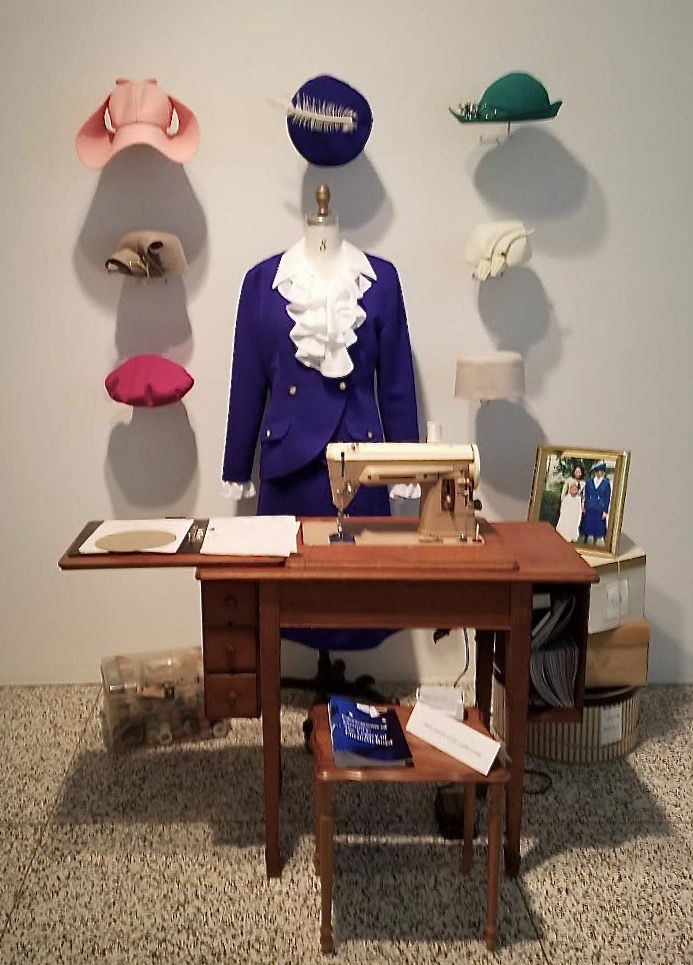Over the summer I had the privilege of meeting the artist Virginia Pollock while volunteering my time in the collection at the Ebenezer Maxwell Mansion in Germantown. Virginia is a trained historian who expresses her knowledge through mediums of paper and textiles.
Can you tell me a bit about you and what you do?
I am currently a History of Design and Curatorial Studies graduate student at the New School in New York and work as a fellow in the Textiles department of the Cooper Hewitt, Smithsonian Design Museum. I recently graduated from Moore College of Art & Design in Philadelphia, majoring in Curatorial Studies and minoring in Textile Design. My academic research is rooted in material culture studies which influences my artwork.

What sort of art do you enjoy creating?
My work involves paper and fiber media, with a strong focus on referencing historical themes and processes. I have mostly worked with paper cutting, but in college I was enrolled in classes that incorporated knitting and surface design manipulation with printing. These mediums emphasize a handmade aspect and tend to overlap, with the example of a paper cut design being used as a print stencil on fabric. Recently I have started placing paper stencils on cyanotype fabric to create alternative photographic prints.
Where do you find your inspiration?
Most of my inspiration stems from historical textiles or print media and could be anything from a late nineteenth-century sample of lace to an old print of a constellation. I find that most of the research behind potential new projects results from trying to comprehend how a particular textile was decorated and constructed. This usually results in helping to understand and appreciate the final product.

What drew you to textile art? How do you incorporate textiles into your work?
I believe it relates to the last question and how the textile research was so fascinating that it naturally turned into making different pieces. The work that incorporates textiles is experimental and is still developing. Most recently I started creating paper cut stencils and digitally manipulating these images to make repeating patterns for textiles. I also printed and constructed a very basic skirt made of cyanotype fabric that was printed with images of old lace scraps.
Do you make clothing, too? Can you tell me about your hand printing process?
Unfortunately, I only have some basic sewing skills, but in the future would like to learn about more complicated garment construction methods. I have been more interested in the surface design process, experimenting with screen printing, copper plate printing, and woodblock printing.

Can you tell me more about your Senior Show? You did some fascinating work with objects that belonged to Elizabeth Boyd. I'm interested in what the material culture communicated about this woman's personhood.
My Senior Thesis Show at Moore College used the clothing collection created by self-taught seamstress and milliner Elizabeth Boyd to present a case study of how identity and time are embedded in the materiality of clothing. Mrs. Boyd was not a famous person, but rather an everyday individual who used fashion as a means of creating her own identity through the construction of over 30 complete outfit ensembles with matching outfits and hats that would be worn to church services and formal events. Sadly, her creative process was influenced by the development of Alzheimer’s disease in the last part of her life. This can be traced through a visual timeline of the hat designs that became much more simplified over time. I worked with Mrs. Boyd’s daughter, Carol Boyd Amos, to catalogue the collection and she has to be credited for her help with the final curating process. She helped arrange her mother’s sewing machine, hat boxes, patterns, notes, hats, and one outfit ensemble to present a recreation of Elizabeth Boyd’s studio in the college galleries. Viewers could see her creative process from start to finish and understand how these fashions became intertwined with her public identity.
You can see more of Virginia's work on instagram at @vpollock.art. Shop a selection of her work at society6.

Comments